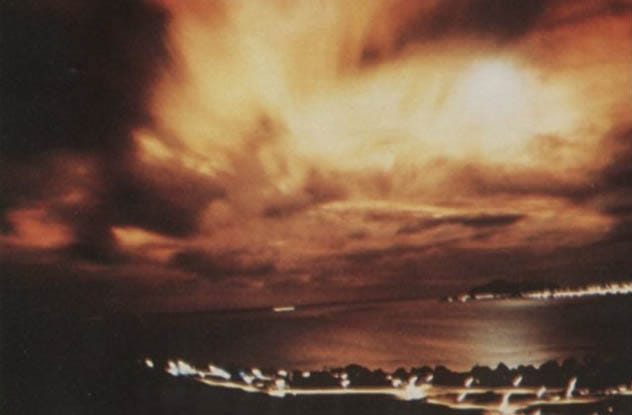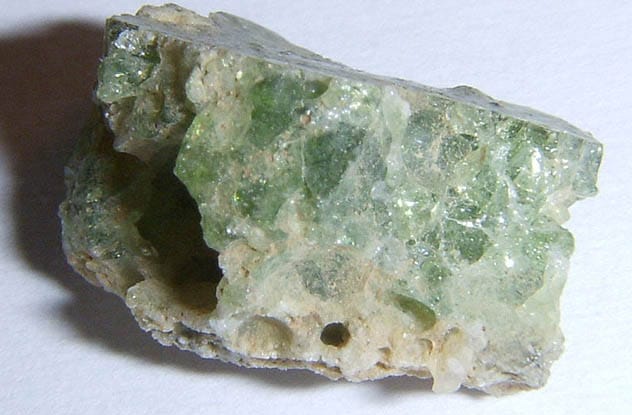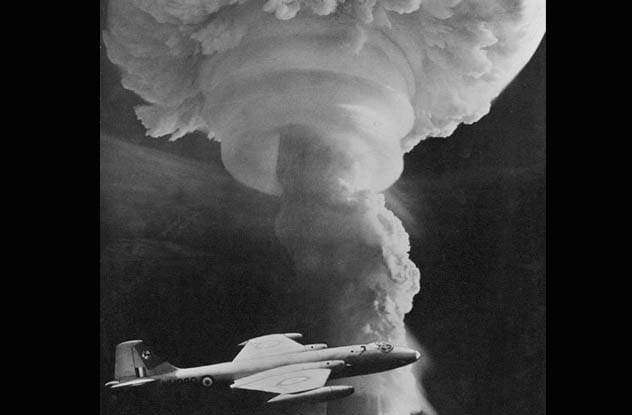Nuclear weapons, the zenith of human destructive prowess, have been handled with a level of recklessness that’s genuinely alarming. It’s astonishing how often those in charge have made choices regarding nukes that seem divorced from reason. This list dives into ten such instances, revealing just how close we’ve come to disaster.
10. Starfish Prime

In an era where detonating nukes in the Nevada desert was becoming passé, the U.S. decided to up the ante by launching one into space in 1962. The logic? To gauge the potential impact of Soviet space nukes on American missiles. This led to Starfish Prime, the largest nuke ever detonated in space. Its EMP burst was colossal, knocking out hundreds of streetlights and disabling phone lines 1,000 kilometers away in Hawaii. Six satellites were also crippled. The scale of the unexpected fallout ensured such an experiment was never repeated.
9. Trinitite Jewelry

Trinitite, the glass formed from the 1945 Trinity nuclear explosion, became a bizarre souvenir. The initial fireball transformed the desert sand into glass, which then rained back down. People collected this glass, and some even fashioned it into jewelry. Despite initial assumptions, the glass was indeed radioactive. Prolonged skin contact resulted in radiation burns. While ingesting a kilogram was deemed necessary for serious harm, the idea of radioactive jewelry is unsettling.
8. The Nuke Cannon
In the early 1950s, the U.S. developed a nuke cannon, a modified railroad cannon capable of firing a nuclear weapon. Dubbed the “Atomic Annie,” its range was a mere 20 miles. Its impracticality was evident from the start; it was too heavy to airlift, making it a logistical nightmare. While never truly viable, it served as a flashy symbol of Cold War might.
7. Flying A Plane Through A Mushroom Cloud

During British hydrogen bomb tests, the desire to collect radioactive material led to an unbelievably risky endeavor. Pilots were tasked with flying planes coated in wax through mushroom clouds immediately after detonation. Joe Pasquini, one such pilot, recounted radioactive rain hitting the plane’s wings at high altitudes. Pasquini developed cancer seven times, and his children suffered from diseases. The British government, however, remains unconvinced of a direct link to radiation exposure.
6. Davy Crockett
The Davy Crockett was a portable bazooka designed to fire miniature nuclear warheads. The concept was to have a small, mobile device capable of launching a low-yield nuke. But its short range meant that the operator risked being caught in the fallout. The project was never used, as even the slightest breeze could turn the launcher into a victim of their own weapon.
5. Standing Under A Nuke
In an attempt to quell public fears about nuclear attacks, the U.S. government conducted a demonstration that placed five volunteers directly beneath a nuclear explosion. The bomb, with one-eighth the payload of Hiroshima’s, detonated 5,600 meters overhead. The men had no protection; the cameraman’s request for shielding was denied. While initially thrilled, all developed cancer, and only two are alive today. This event highlights the extreme measures taken to manipulate public perception.
4. The Baker Shot
The Baker Shot aimed to assess the impact of a nuclear attack on ships. A fleet was assembled at Bikini Atoll, and a nuke was detonated underwater. The explosion showered the decks with millions of gallons of highly radioactive water. Live animals chained to the decks died quickly from radiation poisoning. The ships were irradiated beyond salvage, leading to their scuttling after failed decontamination attempts. This test underscored the devastating, long-term effects of nuclear contamination on naval assets.
3. Sedan
Project Sedan sought to explore the possibility of using nuclear weapons for large-scale excavation. The test created a massive crater in the Nevada desert, flinging an enormous amount of irradiated dust as far as 1,000 kilometers away. The fallout spread over Iowa, Nebraska, Illinois, and South Dakota, exposing more Americans to radiation than any other U.S. nuclear test. This event illustrates the severe environmental and health consequences of nuclear experimentation within the United States.
2. Lake Chagan
In 1965, the Soviets decided to create a lake using a nuclear explosion at the Semipalatinsk Test Site in Kazakhstan. The explosion formed a lake-sized crater, which was then connected to the Chagan River via a channel. However, the lake remains radioactive to this day. This project stands as a lasting monument to the hubris and environmental disregard of the Soviet nuclear program.
1. The Nuke That Almost Exploded Over North Carolina
Perhaps the closest call of all occurred in 1961 when a B-52 bomber crashed over Greensboro, North Carolina, while carrying two nukes, each 260 times more powerful than the Hiroshima bomb. The bombs were jettisoned, and one of them armed upon hitting the ground. Only a single fail-safe switch prevented the detonation. Had that switch failed – three others did – a significant portion of North Carolina would have been decimated. The military later admitted that the bombs lacked adequate safety features.
What do you think about these incidents? Let us know in the comments below!










